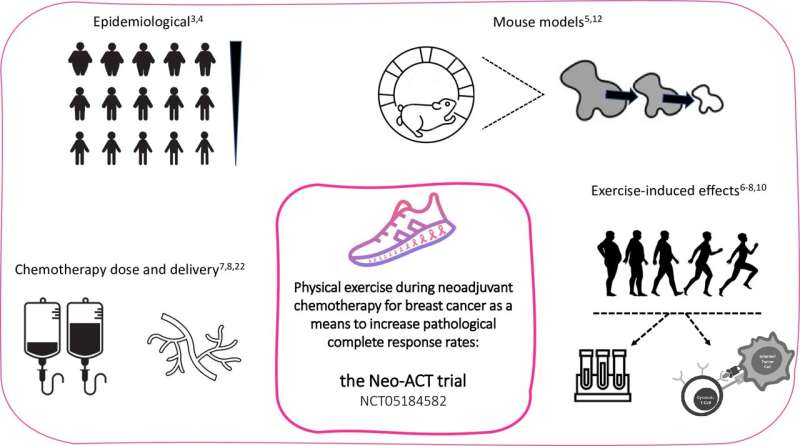Schematic presentation of published evidence regarding physical activity and breast cancer. Credit: PLOS ONE (2022). DOI: 10.1371/journal.pone.0274804
Approximately 9,000 women are diagnosed with breast cancer each year in Sweden, a number that has been steadily increasing since the 1990s. However, as the prognosis for breast cancer has improved, more and more women can now be cured with a combination of surgery, radiotherapy and medical treatment.
Neoadjuvant chemotherapy (NACT) is increasingly used in breast cancer. The best proof of NACT efficacy is pathological complete response (pCR), i.e., the absence of invasive tumor on post-NACT on surgical histopathology.
"While it is known that physical exercise can help patients to better tolerate often harsh cancer treatments, it is an emerging area of research to understand if and how exercise exerts anti-tumor effects and improves oncological outcomes," says Jana de Boniface, principal investigator of the trial and associate professor in the Breast Surgery Group, Department of Molecular Medicine and Surgery.
The Neo-ACT trial opened for recruitment in September 2022, and it is estimated that inclusion may be completed in December 2025. Further details are published in PLOS ONE.
More information: Jana de Boniface et al, Physical exercise during neoadjuvant chemotherapy for breast cancer as a mean to increase pathological complete response rates: Trial protocol of the randomized Neo-ACT trial, PLOS ONE (2022). DOI: 10.1371/journal.pone.0274804
Journal information: PLoS ONE
Provided by Karolinska Institutet
























